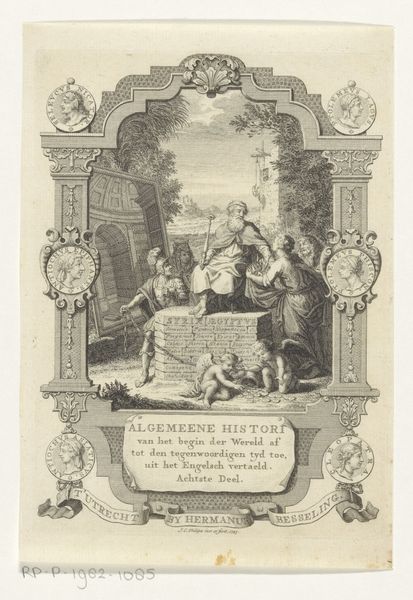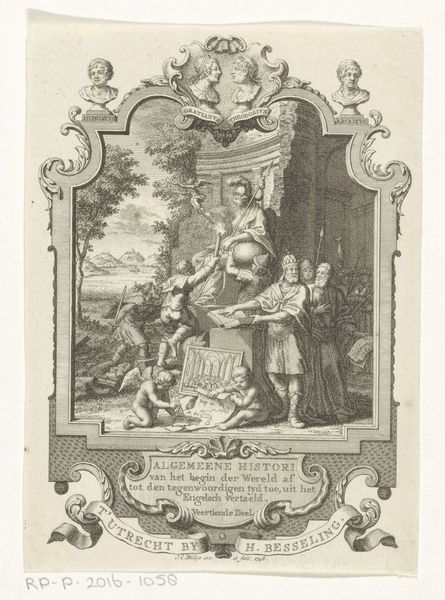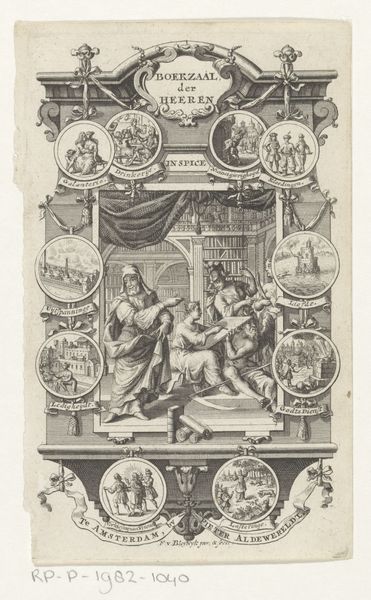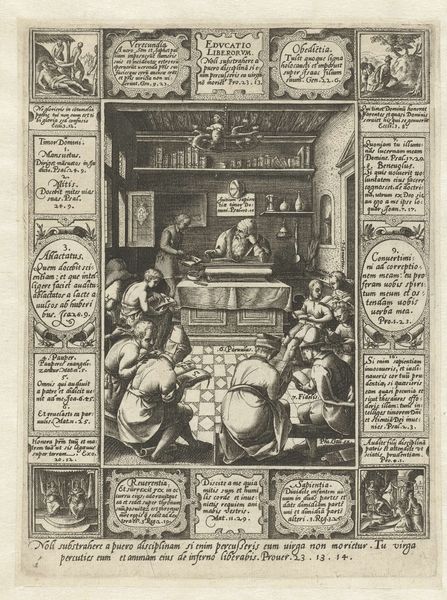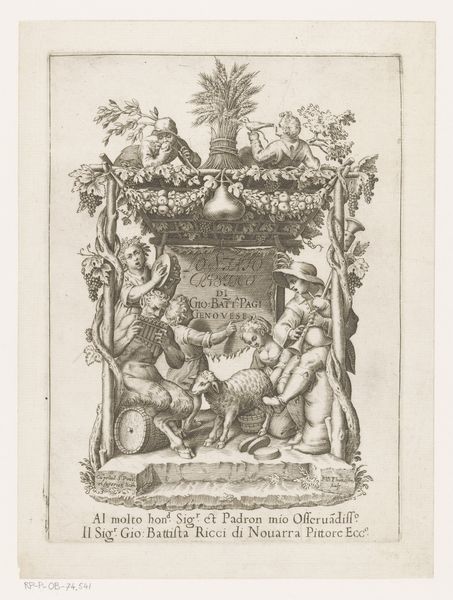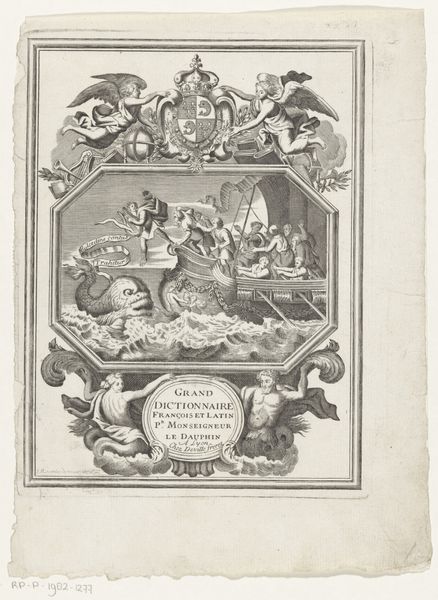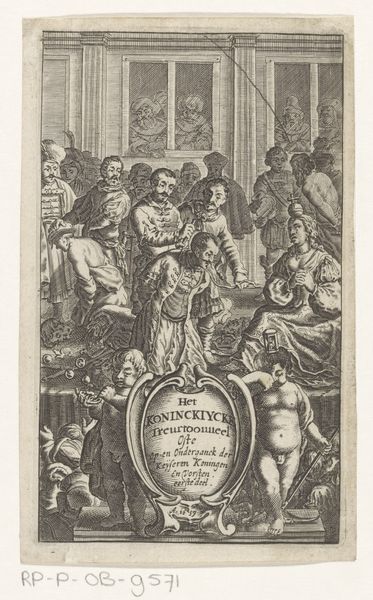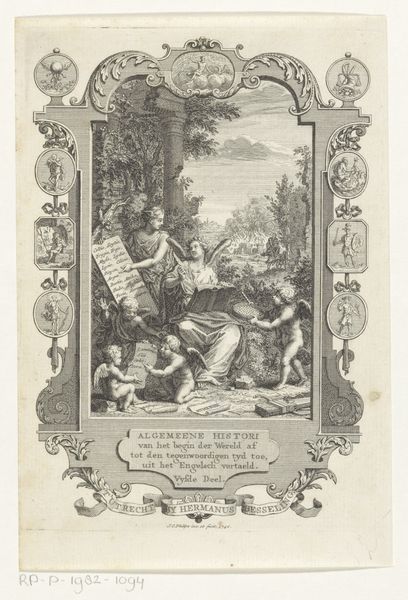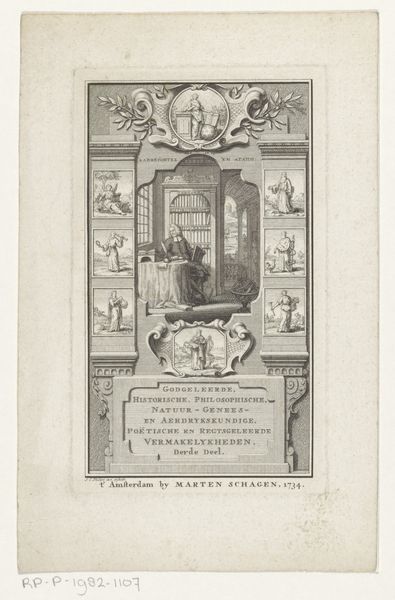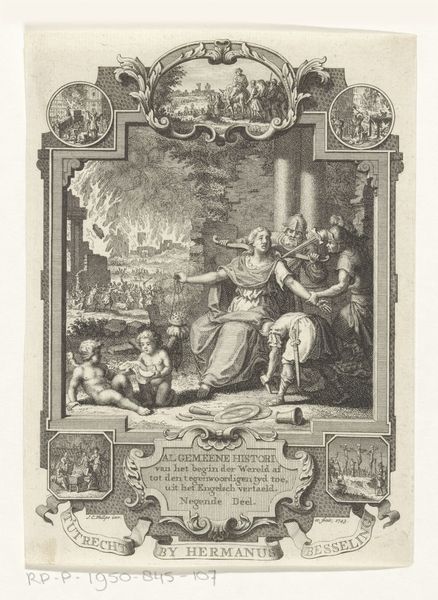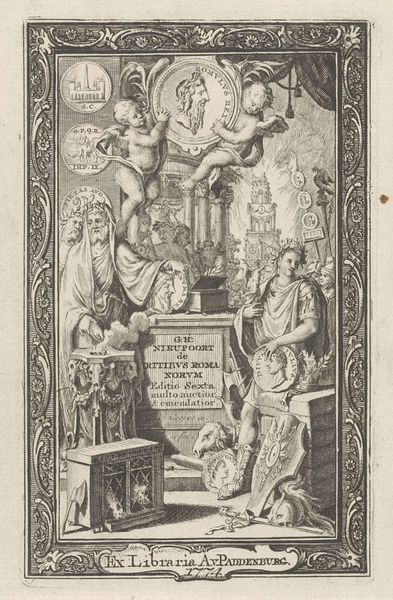
#
comic strip sketch
#
mechanical pen drawing
#
pen illustration
#
old engraving style
#
junji ito style
#
personal sketchbook
#
pen-ink sketch
#
pen work
#
sketchbook drawing
#
storyboard and sketchbook work
Dimensions: height 177 mm, width 130 mm
Copyright: Rijks Museum: Open Domain
Curator: Here we have an etching by Jan Caspar Philips, created in 1744. It's titled "Cartouche met allegorie op Romeinse Rijk," which translates to "Cartouche with allegory on the Roman Empire." It resides in the Rijksmuseum. Editor: Oh, my first impression is that this feels like peering into a history book. It’s incredibly detailed, almost dizzyingly so. The monochromatic palette creates a somber, weighty feeling, doesn't it? Like witnessing the rise and fall of something monumental. Curator: Absolutely. The imagery pulls from a deep well of Roman symbolism. We see the figure of Roma herself, the personification of Rome, enthroned and surrounded by figures and scenes that reference Roman military might and civic life. And note the miniature framed scenes, almost like windows onto key moments in Roman history. Editor: It’s fascinating how he’s packed so much information into a single image. You have Roma with her spear and helmet – that’s pretty classic, but she seems almost weary, surrounded by chaos. Curator: The cartouche form itself is significant. Cartouches were frequently used in maps and architectural designs, as frames for declarations, promising legitimacy and embedding symbolic significance in the content they hold. Editor: And the Romans loved that sort of declaration, didn't they? Thinking about this today, with rising and falling empires still playing out, the work feels eerily resonant. All that supposed glory, all that potential…and there is an element of destruction. I think about the hubris of power. Curator: Indeed. While referencing Roman strength and civilization, Philips also subtly includes signs of the fragility inherent in any empire. The scenes of conflict, subjugation, and even possible downfall point towards the temporality of power. It serves as a potent memento mori, if you will. Editor: Exactly. It's like a grand tapestry woven with threads of both triumph and tragedy, reminding us that even the most impressive civilizations are, ultimately, transient. What a way to tell the story. Curator: A fitting piece for quiet contemplation, reflecting on power, history, and the enduring echo of the Roman Empire. Editor: Makes you think, doesn't it? Maybe some things never really change; we just keep repeating the patterns, etching new versions of the same old story.
Comments
No comments
Be the first to comment and join the conversation on the ultimate creative platform.
